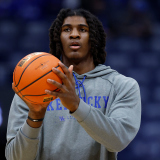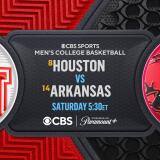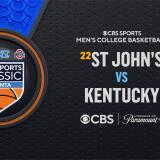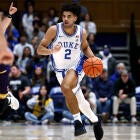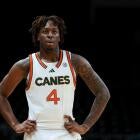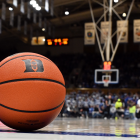Dribble Handoff: Which player who withdrew from the NBA Draft will raise his stock most next season?
Our experts identify the college players who will benefit most from leaving NBA Draft pool
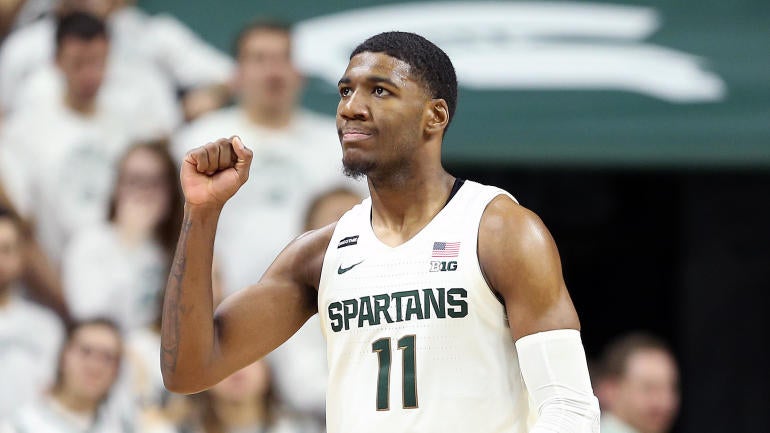
A plethora of top-tier college basketball players with NBA aspirations opted to withdraw from draft consideration last weekend in favor of returning to their schools for at least another season.
Those decisions will inevitably work out better for some than others. But at least a few will likely improve their pro stock considerably over the coming year as they take the feedback given by NBA teams and use it to expand their games in the 2020-21 season.
Take Obi Toppin, for example. The former Dayton forward worked out for NBA team's during the predraft process in 2019 after winning the Atlantic 10's Rookie of the Year award. But he opted to return to Dayton for his sophomore season and evolved from a player who would have likely gone undrafted in 2019 into a likely top-10 pick in the 2020 NBA Draft.
Will there be a player who improves his stock so dramatically from 2020 to 2021? Who knows. But our experts have takes on which player who returned to school after going through the predraft process will have the biggest jump in production/value from last season to next.
Ayo Dosunmu, Illinois
Ayo Dosunmu was a First Team All-Big Ten selection last season for an Illinois team that would've made the 2020 NCAA Tournament had there been a 2020 NCAA Tournament. So the 6-foot-5 soon-to-be junior is already pretty accomplished and undeniably established. But he wasn't a First Team, Second Team or even a Third Team All-American as a sophomore. So there's obviously a next step for Dosunmu to take. And, I think, the big-scoring guard who withdrew from the 2020 NBA Draft last weekend is ready to take it.
Put simply, Dosunmu will be an All-American this season.
He's going to post big numbers for an Illinois team that'll start in the top 10 of the national rankings and could, theoretically, stay there. More than anything, that's the key to being an All-American (or true national player of the year candidate). You usually have to be a super-productive player on a nationally relevant team. And Dosunmu is about to be a super-productive player on a nationally relevant team. If he can get that 3-point percentage up — it was a disappointing 29.6% last season — Dosunmu will be really difficult for opposing defenses to deal with and the reason Illinois could find itself in the Final Four for the first time since 2005. -- Gary Parrish
Itching for more college hoops analysis? Listen below and subscribe to the Eye on College Basketball podcast where we take you beyond the hardwood with insider information and instant reactions.
Jordyn Adams, Austin Peay
I love this week's question (nevermind that I recommended it!) because there's a lot of players to consider and yet it's a tough needle to thread. Of the 165 underclassmen who declared for the 2020 NBA Draft, 91 of them returned. And of that group headed back, almost every player was either the first or second best player on his team. So they were already good. But who's going to go from good to great?
My nomination goes to Jordyn Adams, a sophomore point guard with Austin Peay who has a chance to be one of the five best players in mid-major college hoops -- and yet he might have the best player, Terry Taylor, as a teammate. But Adams has a power-conference ceiling. He was originally a Baylor commit. Now he's a big-school player in a small-school conference and figures to be the next dynamic guard to dominate the OVC (Ja Morant being the most recent). Adams is no Morant, but he can have a big jump year over year. He averaged 17.4 points, 3.2 rebounds and 2.1 assists. The points might stay relatively steady -- though 20 per game is my prediction -- while the boards and dimes should jump. Adams shot 43% from 2-point range last season, a stat I expect to increase. Between Taylor and Adams, Matt Figger has the best 1-2 combo in mid-major hoops. -- Matt Norlander
Darius Days, LSU
LSU is losing leading scorer Skylar Mays and versatile big man Emmitt Williams, but Ja'Vonte Smart, Trendon Watford and Darius Days are all returning. And while Days is arguably the least-recognizable name of that list, he is no question in line for the biggest leap of the trio -- set to go from a 23.5-minute-per-game player to 30 or more.
The versatility of Days leaves LSU no choice but to plug him in as a starter -- he's 6-6 and can play small forward or power forward -- but the skill will be reason enough to bet on his return paying personal dividends. He's a skilled 3-point shooter who took a dip in efficiency last season, but with a long wingspan and a smooth outside stroke, he has 3-and-D role-player potential at the next level and another season at the college level to show scouts he belongs. -- Kyle Boone
Aaron Henry, Michigan State
The stage is set for Henry to evolve into a primary option as a junior after playing a complimentary role during his first two seasons at Michigan State. The Spartans have to replace the 32.3 points per game that Cassius Winston and Xavier Tillman supplied last season, and Aaron Henry is poised to get plenty of them after averaging 10 points per game last season.
A 6-6 wing with a smooth left-handed release, Henry has primary played off the ball to this point in his career. But he's got the ability to score at all three levels and is a good enough passer to take on a much higher usage rate next season as the Spartans move on from Winston.
After that, all that will be left is for Henry to prove is that he can consistently shut down the opposing team's top perimeter player. He's already a quality defender, but he has the physical tools to be even better, and if he takes his defense to the next level as a junior, Henry will have the attention of NBA teams.
In the long-run, his size and improving 3-point shooting make him an intriguing 3-and-D player at the next level. In the mean time, Henry is well-positioned to be one of the most-productive players in the Big Ten during a junior season that seems destined to improve his NBA Draft stock. -- David Cobb




